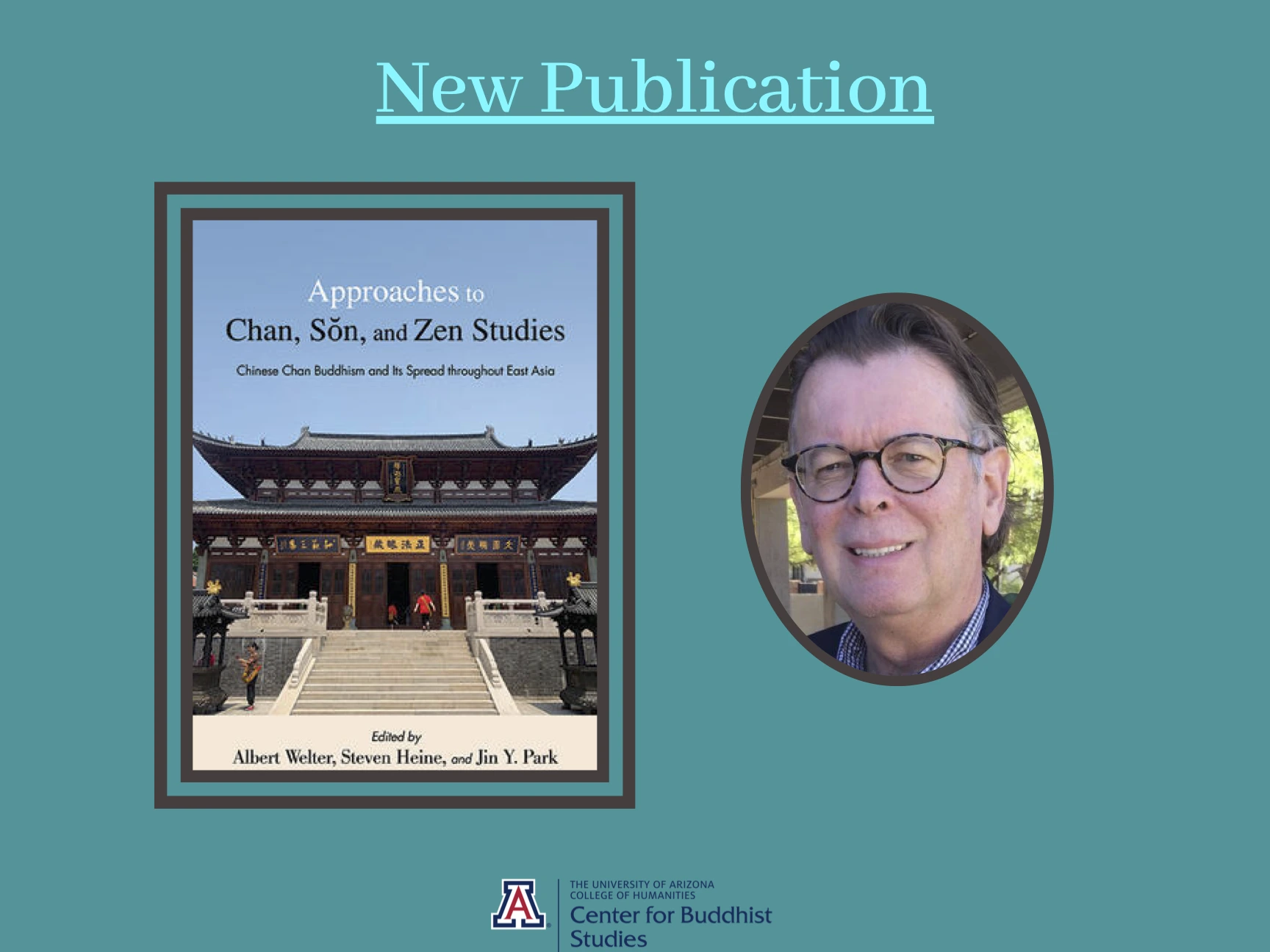
We would like to announce the publication of a new volume, Approaches to Chan, Sŏn, and Zen Studies: Chinese Chan Buddhism and Its Spread throughout East Asia (SUNY Press, 2022). This volume is a comprehensive treatment of the shared traditions of Chan, Sŏn, and Zen in dynamic interaction across East Asia, acknowledging the changing and growing parameters of the field of Zen studies.
It is edited by Albert Welter, Steven Heine, and Jin Y. Park, with a foreword by Robert E. Buswell Jr.. Dr. Albert Welter is our center’s core faculty and the department head of the Department of East Asian Studies at The University of Arizona. The volume includes an article by Dr. Jiang Wu titled “A Greater Vehicle to the Other Shore: Chinese Chan Buddhism and the Sino-Japanese Trade in the Seventeenth Century.”
Information may be accessed through the following link: https://sunypress.edu/Books/A/Approaches-to-Chan-Son-and-Zen-Studies
Description:
This volume focuses on Chinese Chan Buddhism and its spread across East Asia, with special attention to its impacts on Korean Sŏn and Japanese Zen. Zen enthralled the scholarly world throughout much of the twentieth century, and Zen Studies became a major academic discipline in its wake. Interpreted through the lens of Japanese Zen and its reaction to events in the modern world, Zen Studies incorporated a broad range of Zen-related movements in the East Asian Buddhist world. As broad as the scope of Zen Studies was, however, it was clearly rooted in a Japanese context, and aspects of the "Zen experience" that did not fit modern Japanese Zen aspirations tended to be marginalized and ignored. Approaches to Chan, Sŏn, and Zen Studies acknowledges the move beyond Zen Studies to recognize the changing and growing parameters of the field. The volume also examines the modern dynamics in each of these traditions.
Table of Contents:
Foreword
Robert E. Buswell Jr.
Preface
Introduction
Section I: Chinese Chan and the Greater East Asian Region
1. The Spread of Chan Buddhism: Linguistic and Cultural Constraints
John Jorgensen
2. The Hangzhou Region and the Spread of East Asian Buddhism
Albert Welter
3. A Greater Vehicle to the Other Shore: Chinese Chan Buddhism and the Sino-Japanese Trade in the Seventeenth Century
Jiang Wu
Section II: The Japanese Zen Nexus
4. The Transmission of the Blue Cliff Record to Medieval Japan: Textuality and Historicity in Relation to Mythology and Demythology
Steven Heine
5. Interpreters, Brush-Dialogue, and Poetry: Translingual Communication between Chan and Zen Monks
Jason Protass
6. Doves on My Knees, Golden Dragons in My Sleeves: Emigrant Chan Masters and Early Japanese Zen Buddhism
Steffen Döll
7. The Lute, Lyric Poetry, and Literary Arts in Chinese Chan and Japanese Zen Buddhism
George A. Keyworth
Section III: The Korean Sŏn Nexus
8. Pure Rules and Public Monasteries in Korea
Juhn Y. Ahn
9. Gender and Dharma Lineage: Nuns in Korean Sŏn Buddhism
Jin Y. Park
10. Mindful Interactions and Recalibrations: From Chinul to T’oegye
Kevin N. Cawley
Section IV: Chan, Zen, and Sŏn in the Modern Period
11. Taixu’s History of the Chan Tradition
Eric Goodell
12. Zen Internationalism, Zen Revolution: Inoue Shūten and Uchiyama Gudō and the Crisis of Buddhist Modernity in Late Meiji Japan
James Mark Shields
13. The Struggle of the Jogye Order to Define its Identity as a Meditative School in Contemporary Korea
Bernard Senecal
Bibliography
Contributors
Index

